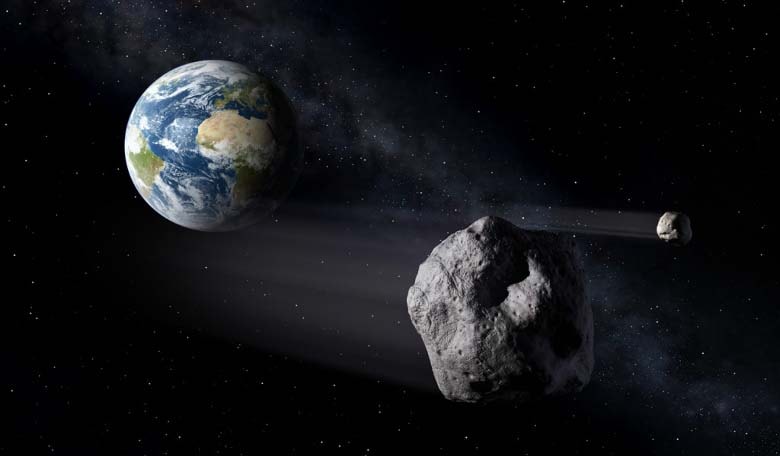Two decades ago, the population of near-Earth asteroids (NEAs) that would brush close to our planet as they made their way around the Sun, was estimated to be around a few hundred objects. Recent models, however, have suggested that as many as 1000 km-sized NEAs and up to approximately 108 NEAs with absolute magnitude H < 28, represents the true number of objects lying in wait to get a closer view of Earth. The absolute magnitude of an asteroid is defined as the visual magnitude an observer would record if the asteroid were placed 1 Astronomical Unit (AU) away, and 1 AU from the Sun and at a zero phase angle. From the absolute magnitude, the diameter of an asteroid can be estimated, so for an asteroid with H = 3, its diameter is between 670 - 1490 kilometres and for an asteroid with H = 28, its diameter is between 7 - 15 metres1.
It is perhaps no surprise then that determining the near-Earth asteroids (NEAs) population is a focus of intense research and now scientists based at the Planetary Science Institute (PSI), Tucson, Arizona, who have analysed the combined observations of nine of the leading asteroid surveys over the past two decades, including projects such as NEOWISE, have stated that the NEAs population is significantly smaller than previous estimates. Phew.
However, before the celebrations start, the new smaller figure is still a comparatively large one - the population of small NEAs for H < 28 is now approximately 430,000 ± 30,000 – a decrease by two orders of magnitude and their larger cousins (larger than 1 km) are approximately 10% lower than most recent estimates, so around 900 ± 10 NEAs.
The research, by Pasquale Tricarico, a senior scientist at PSI and a participating scientist on the Dawn mission for both Vesta and Ceres, also suggests that the albedo of asteroids studied to date, in the size range between 200 - 100m, could be lower than originally calculated. An objects albedo measures the fraction of incident light (or radiation) that is reflected by the objects surface and for asteroids, this quantity is also needed to calculate its diameter. Since the albedo for most asteroids is not known, an albedo range between 0.25 to 0.05 is usually assumed, which results in an upper and lower diameter range for the asteroid.
If this in indeed the case, then Tricarico states that if small NEAs are on average darker than previously thought, then early warning systems using optical telescopes will have significantly shorter warning times for potential impacts by an asteroid of equivalent size. As the asteroid that flattened over 2000 square kilometres in Tunguska was estimated to be only 60 metres in diameter, it will fall to telescopes that study different wavelengths of light, such as infrared to aid in their timely detection.
While alerting the Earth of an impending asteroid impact is top priority, NEAs also represent a target for robotic and human exploration, along with the possibility of exploiting their raw materials for in-space resource utilisation. So, if a large potential Earth-bound object turns out not to pose a threat to humanity after all, its constituent parts could be used to develop space structures and to help generate the rocket fuel needed to explore and colonise worlds beyond our own. Asteroid mining has the potential to be an enormous market revenue with estimates of the mineral wealth contained in the asteroid belt (between the orbits of Mars and Jupiter) equivalent to about 100 billion dollars for every person on Earth today.
For further information on this research, please see http://arxiv.org/pdf/1604.06328.pdf
1) Source http://neo.jpl.nasa.gov











